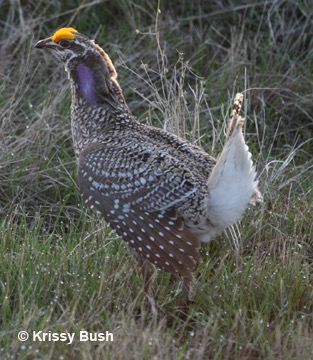Plains Sharp-tailed Grouse (Tympanuchus phasianellus jamesi) are found
in steppe, grassland, and mixed shrub habitats throughout central and northern
North America. They originally
occupied 21 U.S. states and eight provinces, but have been extirpated from
eight states. Populations
have been greatly reduced due to habitat loss and conversion of native land to
agriculture. As the human population increases in the province and industrial
and agricultural development expands, habitat for Sharp-tailed Grouse continues
to decrease and become fragmented.
Habitat fragmentation can result in small populations that are at risk
of losing genetic variability.
This loss of genetic diversity can increase the probability of
population extinction, reduce that population’s ability for future adaptive
change, and decrease individual fitness.
Reduced genetic variation is expected to be more evident in lekking
species since only a small proportion of males in the Sharp-tailed Grouse
population are thought to mate.
The Sharp-tail genetics project involves using 1155 molted
feather samples collected by Alberta Fish and Wildlife and ACA personnel during
intensive lek counts in the spring of 2006 and 2007. These samples are from up to 77 leks in southern Alberta and Saskatchewan.
